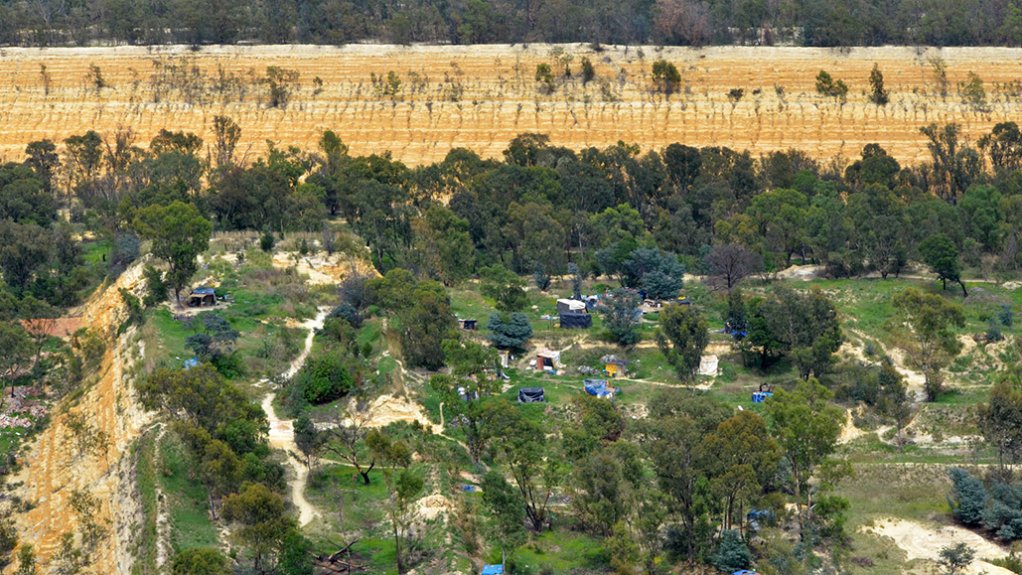Regulations enable miners to bypass closure duties


NEED FOR SUSTAINABLE CLOSURE The right to transfer mining rights allows for the obfuscation of ownership and liability, and facilitates the “pass-the-parcel” approach
Photo by Mark Olalde
While local mining regulations imply that a well-structured process needs to be followed for mine closure in South Africa, environmental organisation Federation for a Sustainable Environment CEO Mariette Liefferink argues that the current regulatory framework enables miners to circumvent closure duties.
“The right to transfer mining rights allows for the obfuscation of ownership and liability, and facilitates the pass-the-parcel approach. This approach includes the selling of mines close to closure to less resourced companies, which will relieve mining companies of the responsibility and liability of dealing with the problems of closure,” she contends.
The Minerals and Petroleum Resources Development Act (MPRDA) places no specific obligation on the court to determine whether a company applying for liquidation has applied for a closure certificate, which ensures the transfer of environmental liabilities and/or the responsibility for topping up any shortfalls in rehabilitation funds.
The MPRDA regulations for mine closure prescribe several objectives that mainly focus on rehabilitating mine land to its natural state, or to a predetermined and agreed standard or land use that conforms with the concept of sustainable development.
These objectives include eliminating immediate harm to human health and safety, ensuring that groundwater is fit for current and future domestic use, and ensuring that surface water is fit for basic human needs and aquatic ecosystem requirements.
They also aim to eliminate the risk of harm to nonaquatic organisms, and ensure that the soil is fit for use that is consistent with current and future land use.
Only after the Department of Water and Sanitation, and the Chief Inspector of Mines have confirmed in writing that provisions have been complied with – in terms of health and safety, and the management of potential pollution of water resources – may a closure certificate be issued and the financial contribution or part thereof be returned.
Case Study
Liefferink points out that the liquidation of the Mintails Group of companies in 2018 provides sufficient evidence that the Department of Mineral Resources and Energy (DMRE) has failed to effectively implement and carry out the intentions of Parliament to ensure that all mines rehabilitate pollution caused by mining.
Changes to mining laws were made by Parliament after 2002 to ensure that, in mining, as in other countries, “the polluter must pay”.
Further, in 2018, the Parliamentary Portfolio Committee on Mineral Resources and Energy recommended that “the DMRE must identify clearly and specifically the gaps between mining, insolvency and company law that have led to this ongoing situation, where the polluter does not pay, it is the State that ends up paying”.
When Mintails was liquidated, the company had a financial shortfall of R460-million, she elaborates.
Following Mintails’ liquidation, there was a stripping of assets, which included the degradation of a R3-billion gold treatment plant, less than two months after the liquidation, and the failures of the 1L8 tailings storage facility (TSF) and the 1L10 TSF within the headwaters of the Wonderfonteinspruit.
“The Wonderfonteinspruit catchment area is densely populated and extensively used for irrigation, providing water for cattle, spiritual rituals, domestic use and recreational activities.”
Liefferink states that a catastrophic failure of a TSF could lead to long-term environmental damage, with huge cleanup costs.
“The long-term management of TSFs needs to be effective throughout the life of an operation, including closure and postclosure, and it is the responsibility of the mining companies that produce the TSF.”
Current MPRDA Regulations prescribe the requirements to obtain a closure certificate.
Liefferink explains that a holder of a mining right must apply for a closure certificate upon lapsing or abandonment of the right or permit, the cessation of prospecting or mining operations, or the relinquishment of any portion of the land to which the permit relates – within 180 days from these situations occurring.
“The holder must complete and submit a prescribed closing plan, including an environmental risk report, to the DMRE’s regional manager,” she concludes.
Comments
Press Office
Announcements
What's On
Subscribe to improve your user experience...
Option 1 (equivalent of R125 a month):
Receive a weekly copy of Creamer Media's Engineering News & Mining Weekly magazine
(print copy for those in South Africa and e-magazine for those outside of South Africa)
Receive daily email newsletters
Access to full search results
Access archive of magazine back copies
Access to Projects in Progress
Access to ONE Research Report of your choice in PDF format
Option 2 (equivalent of R375 a month):
All benefits from Option 1
PLUS
Access to Creamer Media's Research Channel Africa for ALL Research Reports, in PDF format, on various industrial and mining sectors
including Electricity; Water; Energy Transition; Hydrogen; Roads, Rail and Ports; Coal; Gold; Platinum; Battery Metals; etc.
Already a subscriber?
Forgotten your password?
Receive weekly copy of Creamer Media's Engineering News & Mining Weekly magazine (print copy for those in South Africa and e-magazine for those outside of South Africa)
➕
Recieve daily email newsletters
➕
Access to full search results
➕
Access archive of magazine back copies
➕
Access to Projects in Progress
➕
Access to ONE Research Report of your choice in PDF format
RESEARCH CHANNEL AFRICA
R4500 (equivalent of R375 a month)
SUBSCRIBEAll benefits from Option 1
➕
Access to Creamer Media's Research Channel Africa for ALL Research Reports on various industrial and mining sectors, in PDF format, including on:
Electricity
➕
Water
➕
Energy Transition
➕
Hydrogen
➕
Roads, Rail and Ports
➕
Coal
➕
Gold
➕
Platinum
➕
Battery Metals
➕
etc.
Receive all benefits from Option 1 or Option 2 delivered to numerous people at your company
➕
Multiple User names and Passwords for simultaneous log-ins
➕
Intranet integration access to all in your organisation



















